Les platelages en acier sont devenus un élément essentiel des projets de construction, car ils offrent une résistance et une polyvalence supérieures. Comprendre les dimensions des ponts en acier Il est essentiel de sélectionner les bons matériaux pour votre projet. Que vous travailliez sur des bâtiments commerciaux, des espaces résidentiels ou des sites industriels, le platelage métallique constitue une solution efficace pour créer des systèmes de plancher et de toiture robustes. Mais qu'est-ce qui entre exactement dans la composition d'un platelage en acier ? Comment les dimensions sont-elles mesurées et quelles sont les variations à connaître ? Plongeons dans l'univers des tabliers métalliques pour en découvrir les dimensions, les types et le fonctionnement.
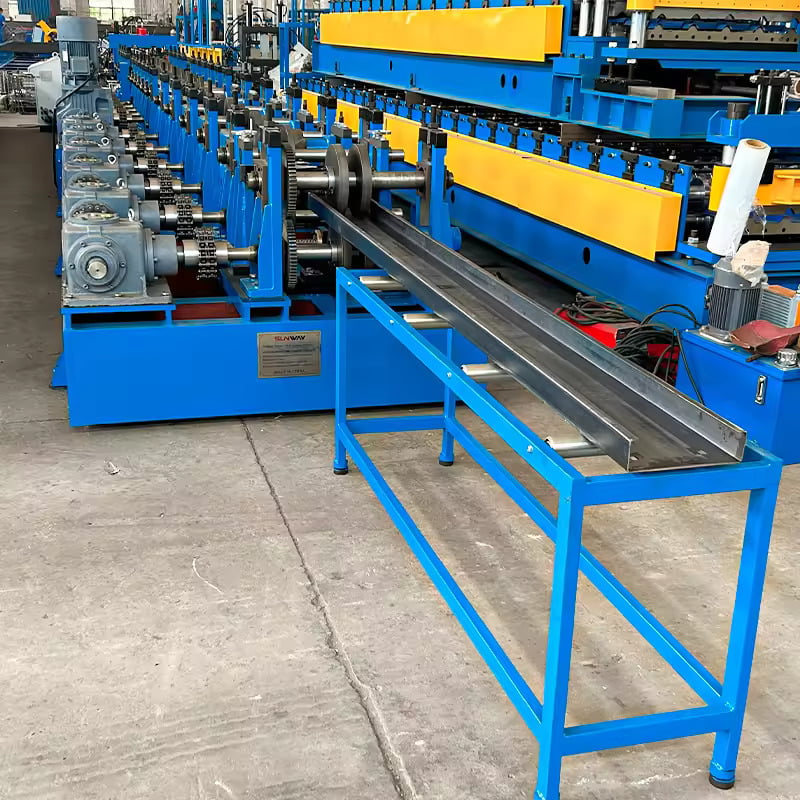
Vue d'ensemble des dimensions des tabliers métalliques
Les dimensions des tabliers métalliques font référence à la taille, à l'épaisseur et à d'autres mesures des panneaux de tablier métallique utilisés dans les projets de construction. Ces tabliers sont généralement fabriqués à partir de tôles d'acier ondulées, qui sont façonnées en stries et en rainures pour une résistance et une rigidité accrues. Le platelage métallique est principalement utilisé dans les systèmes de plancher, les structures de toiture, les mezzanines et comme coffrage pour les dalles de béton.
Lors du choix d'un tablier métallique, il est essentiel de comprendre les différentes dimensions et leur impact sur la fonctionnalité de votre projet. Plusieurs facteurs tels que l'épaisseur, la largeur, la hauteur des nervures et la profondeur totale définissent la qualité et l'utilité du tablier métallique.
Principaux avantages des terrasses en acier
- Rapport résistance/poids : Les terrasses en acier sont légères mais incroyablement solides, ce qui les rend faciles à transporter et à installer sans sacrifier la durabilité.
- Flexibilité dans la conception : Les terrasses en acier sont disponibles dans une large gamme de tailles et de formes, ce qui permet de les personnaliser en fonction des besoins spécifiques de votre projet.
- Le rapport coût-efficacité : Par rapport à d'autres matériaux de revêtement de sol ou de toiture, les terrasses en acier sont plus abordables en termes de coûts de matériaux et de main-d'œuvre.
- Résistance au feu : L'acier, par nature, est incombustible, ce qui ajoute une couche de sécurité incendie à la structure.
- Durabilité : L'acier est hautement recyclable, ce qui en fait un choix écologique.
Nous allons maintenant nous pencher sur les aspects fondamentaux des dimensions des tabliers métalliques afin de mieux comprendre leur processus de fonctionnement, leurs composants clés et la manière dont ils s'intègrent dans les différentes applications de construction.
Tôles d'acier ondulées : Guide
Les tôles ondulées sont couramment utilisées pour les terrasses en acier en raison de leur forme ondulée, qui renforce la résistance et la capacité de charge. Ces tôles sont fabriquées en faisant passer des tôles d'acier plates à travers une série de rouleaux, formant ainsi un motif de crêtes et de vallées. Les tôles ondulées sont souvent galvanisées ou recouvertes d'une couche protectrice pour éviter la rouille et la corrosion.
Comment les tôles ondulées sont-elles fabriquées ?
Le processus de fabrication commence par le laminage des bobines d'acier en feuilles plates. Ces tôles sont ensuite passées dans une série de rouleaux façonnés pour former le profil ondulé. Ensuite, les tôles d'acier peuvent être soumises à des processus de galvanisation ou de revêtement, où elles sont trempées dans du zinc ou d'autres matériaux de protection.
Les dimensions des tôles ondulées varient en fonction de l'épaisseur (mesurée en jauges), de la hauteur des nervures et de la largeur totale du panneau. Ces facteurs influencent la capacité de charge de la tôle, d'où l'importance de choisir les bonnes dimensions en fonction de vos besoins structurels.
Types de ponts en acier et leurs dimensions
Il existe différents types de terrasses en acier, chacune étant conçue pour répondre à des besoins spécifiques. Le tableau ci-dessous présente les différents types de ponts en acier et leurs dimensions communes.
| Type de tablier métallique | Hauteur des côtes (pouces) | Épaisseur (jauge) | Largeur (pouces) | Utilisations |
|---|---|---|---|---|
| Form Decking | 1.5 | 22 à 16 | 36 à 48 | Utilisé comme coffrage pour les sols en béton |
| Terrasse en composite | 2 à 3 | 18 à 20 ans | 36 à 48 | Fournit un renforcement supplémentaire |
| Terrasse de toit | 1 à 1,5 | 20 à 22 | 36 à 42 | Pour la création de systèmes de toiture |
| Terrasse cellulaire | 2 à 3 | 16 à 18 ans | 36 à 48 | Offre des espaces cachés pour le câblage |
| Terrassements profonds | 3 à 4,5 | 16 à 20 ans | 36 à 48 | Haute résistance pour les structures de grande envergure |
| Revêtements de sol acoustiques | 2 à 3 | 18 à 22 ans | 36 à 48 | Amortissement du son pour les espaces acoustiquement sensibles |
Chaque type de terrasse a ses applications spécifiques. Par exemple, terrasse en composite est souvent choisi pour les planchers qui nécessitent une capacité de charge supplémentaire, tandis que le terrasse de toit est plus adapté aux systèmes de toiture en raison de sa capacité à supporter l'isolation et les matériaux de couverture.
Processus de travail des dimensions des tabliers métalliques
Le processus de sélection et d'installation des dimensions d'un tablier métallique comporte plusieurs étapes. Voici un aperçu du déroulement des opérations, depuis la sélection du type de tablier métallique approprié jusqu'à l'installation.
Étape 1 : Déterminer les besoins en charge
La première étape dans le choix des dimensions correctes d'une terrasse en acier consiste à évaluer les exigences de charge de votre projet. Cela comprend à la fois la charge permanente (le poids de la terrasse et des autres structures permanentes) et la charge vive (le poids des personnes, du mobilier ou de l'équipement).
Étape 2 : Choisir le type de terrasse
En fonction des exigences de charge, vous sélectionnerez le type de platelage approprié, qu'il s'agisse d'un platelage de coffrage pour les sols en béton, d'un platelage composite pour les structures renforcées ou d'un platelage de toiture pour les systèmes de couverture.
Étape 3 : Mesurer et calculer les dimensions
Une fois le type choisi, l'étape suivante consiste à déterminer les bonnes dimensions. Les facteurs à prendre en compte sont les suivants :
- Épaisseur : Les ponts en acier plus épais sont plus résistants mais plus lourds.
- Largeur : Les panneaux plus larges couvrent une plus grande surface mais peuvent nécessiter des supports supplémentaires.
- Hauteur des côtes : Des nervures plus hautes améliorent la capacité de charge du tablier.
Étape 4 : Installation de la terrasse en acier
L'installation consiste à poser le platelage en acier sur des poutres de soutien, en veillant à ce que les panneaux se chevauchent correctement pour une plus grande solidité. Le tablier est ensuite fixé à l'aide d'attaches mécaniques ou de techniques de soudage.
Étape 5 : Ajouter du béton ou des matériaux de couverture
Pour les planchers, le béton est coulé sur le tablier métallique pour former une dalle composite. Pour les toits, l'isolation et les matériaux d'étanchéité sont appliqués sur le tablier métallique.
-
 Petit pain de cadre d'armoire électrique formant la machine
Petit pain de cadre d'armoire électrique formant la machine -
 Machine de formage de rouleaux de rail DIN
Machine de formage de rouleaux de rail DIN -
 Rouleau d'échelle de câble formant la machine
Rouleau d'échelle de câble formant la machine -
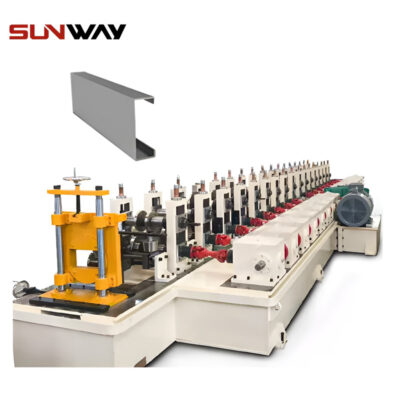 Support de montage PV Profilé en forme de C formant la machine
Support de montage PV Profilé en forme de C formant la machine -
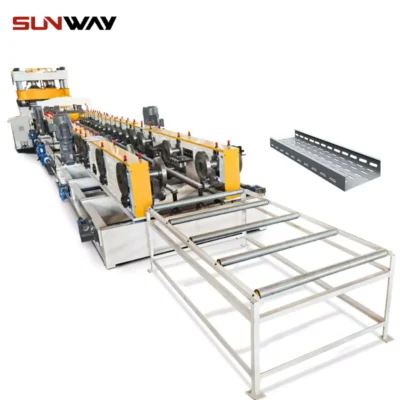 Rouleau de chemin de câbles formant la machine
Rouleau de chemin de câbles formant la machine -
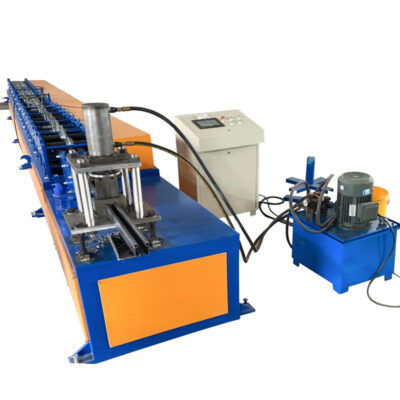 Petit pain léger d'angle de mur de quille formant la machine de formage d'angle de mur de coins de protecteur de machine
Petit pain léger d'angle de mur de quille formant la machine de formage d'angle de mur de coins de protecteur de machine -
 Perle de coin de quille légère faisant la machine Petit pain de fer d'angle de quille de V formant la machine
Perle de coin de quille légère faisant la machine Petit pain de fer d'angle de quille de V formant la machine -
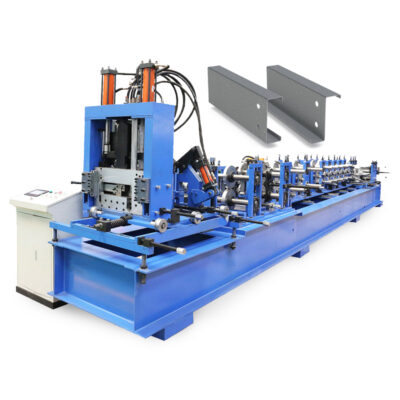 Entièrement automatique CZ Purlin Machine Acier Métal Ancien Cadre & Purlin Machines
Entièrement automatique CZ Purlin Machine Acier Métal Ancien Cadre & Purlin Machines -
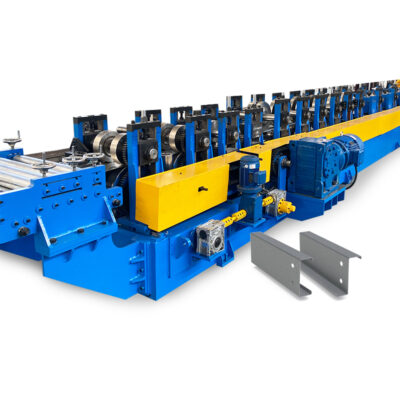 Opération facile hydraulique entièrement automatique 80-300 Panne C réglable faisant des machines de formage de rouleaux de machine
Opération facile hydraulique entièrement automatique 80-300 Panne C réglable faisant des machines de formage de rouleaux de machine
Principaux éléments du tablier métallique et leurs fonctions
Lorsque l'on travaille avec des tabliers métalliques, la compréhension des composants clés et de leurs fonctions contribue à la réussite de l'installation. Vous trouverez ci-dessous un tableau détaillé de ces composants.
| Composant | Fonction |
|---|---|
| Tôles d'acier | Matériau de base de la terrasse, qui lui confère sa résistance et sa rigidité. |
| Côtes | Crêtes ondulées qui augmentent la capacité de charge et l'intégrité structurelle du tablier. |
| Fixations | Boulons, vis ou soudures utilisés pour fixer le tablier métallique à la structure porteuse. |
| Béton (pour les sols) | Crée une dalle composite lorsqu'elle est coulée sur une terrasse en acier, ce qui lui confère résistance et stabilité. |
| Isolation (pour les toits) | Assure l'isolation thermique et phonique, améliorant ainsi l'efficacité énergétique. |
| Goujons soudés | Utilisé dans les terrasses composites pour relier les terrasses en acier au béton, améliorant ainsi le transfert de charge. |
Vitesse et efficacité des machines dans la fabrication des tabliers métalliques
Le processus de fabrication des tabliers métalliques nécessite des machines à haut rendement pour garantir une production précise et rapide. Le tableau ci-dessous illustre les paramètres courants des machines.
| Machine | Vitesse (m/min) | Efficacité (%) | Application |
|---|---|---|---|
| Rouleau formant la machine | 10-20 | 85-90 | Utilisé pour créer des profils ondulés |
| Machine de galvanisation | 8-15 | 80-85 | Revêtement des tôles d'acier avec des couches protectrices |
| Machine à découper | 15-25 | 90-95 | Découpe de ponts en acier aux longueurs souhaitées |
Personnalisation des dimensions des tabliers métalliques : Paramètres mécaniques
Dans certains cas, les projets de construction nécessitent des tabliers métalliques aux dimensions personnalisées. Voici quelques paramètres mécaniques qui peuvent être ajustés au cours du processus de fabrication.
| Paramètres | Valeur standard | Gamme personnalisable |
|---|---|---|
| Épaisseur (jauge) | 22 | 16 à 22 ans |
| Hauteur des côtes | 1,5 pouces | 1 à 4 pouces |
| Largeur du panneau | 36 pouces | 36 à 48 pouces |
| Longueur | 10 pieds | 6 à 20 pieds |
Applications des terrasses en acier
Les platelages en acier sont utilisés dans divers projets de construction, y compris les planchers, les toits et les mezzanines. Voici un tableau détaillé des applications les plus courantes.
| Application | Type de tablier métallique | Avantages |
|---|---|---|
| Sols des bâtiments commerciaux | Terrasse en composite | Offre résistance et flexibilité pour les zones à forte charge |
| Toitures résidentielles | Terrasse de toit | Léger et résistant au feu |
| Mezzanines | Terrasse cellulaire | Permet de dissimuler des espaces pour le câblage électrique |
| Parking Garages | Terrassements profonds | Supporte les charges lourdes et les longues portées |
Installation, exploitation et entretien des ponts en acier
Une installation correcte et un entretien régulier sont essentiels pour garantir la longévité des terrasses en acier. Le tableau suivant présente les directives d'installation, d'utilisation et d'entretien.
| Phase | Activités principales |
|---|---|
| Installation | Aligner et fixer les tabliers en acier à l'aide de fixations ou de soudures ; assurer le chevauchement pour une plus grande solidité |
| Fonctionnement | S'assurer que le tablier supporte les charges prévues et vérifier qu'il ne présente pas de signes d'usure. |
| Maintenance | Nettoyer et inspecter la rouille, repeindre ou re-galvaniser si nécessaire |
Choisir le bon fournisseur de terrasses en acier
Le choix du bon fournisseur peut faire une grande différence dans la réussite de votre projet. Voici ce qu'il faut prendre en compte :
| Facteur | Considérations |
|---|---|
| Réputation | Recherchez des fournisseurs ayant des avis favorables et un historique de fiabilité. |
| Options de personnalisation | S'assurer qu'ils proposent des tailles personnalisées si votre projet nécessite des dimensions non standard. |
| Vitesse de livraison | Renseignez-vous sur les délais d'exécution afin d'éviter tout retard dans le projet |
| Coût | Comparer les prix entre les fournisseurs pour obtenir le meilleur rapport qualité-prix sans sacrifier la qualité |
Détails sur le fournisseur et la gamme de prix
Le tableau ci-dessous présente les principaux fournisseurs de tabliers métalliques et leurs gammes de prix.
| Fournisseur | Fourchette de prix (par mètre carré) | Caractéristiques notables |
|---|---|---|
| ABC Metal Roofing | $2.50 à $5.00 | Offre des tailles sur mesure et une livraison rapide |
| Steel Deck Direct | $3.00 à $6.50 | Spécialisé dans les tabliers profonds de grande portée |
| Solutions pour les terrasses en métal | $2.75 à $5.25 | Offre des options de galvanisation et de couleur |
Comment choisir le meilleur fournisseur de tabliers métalliques
Pour choisir le meilleur fournisseur, il est essentiel de peser le pour et le contre de chaque option. Prenez en compte des facteurs tels que le coût, les délais de livraison, la personnalisation et le service à la clientèle. Voici une comparaison entre deux fournisseurs de premier plan :
| Fournisseur | Pour | Cons |
|---|---|---|
| ABC Metal Roofing | Prix abordables, délais de livraison rapides | Sélection limitée de terrasses profondes |
| Steel Deck Direct | Produits de haute qualité, excellent service à la clientèle | Des prix légèrement plus élevés que ceux des concurrents |
Avantages et limites des terrasses en acier
Les terrasses en acier présentent de nombreux avantages, mais aussi certaines limites.
| Avantages | Limites |
|---|---|
| Solide, léger et durable | Nécessite un entretien régulier pour éviter la corrosion |
| Résistant au feu et respectueux de l'environnement | Coût initial plus élevé que les options en bois ou en béton |
| Personnalisable pour diverses applications | Peut nécessiter une isolation supplémentaire pour la performance thermique |
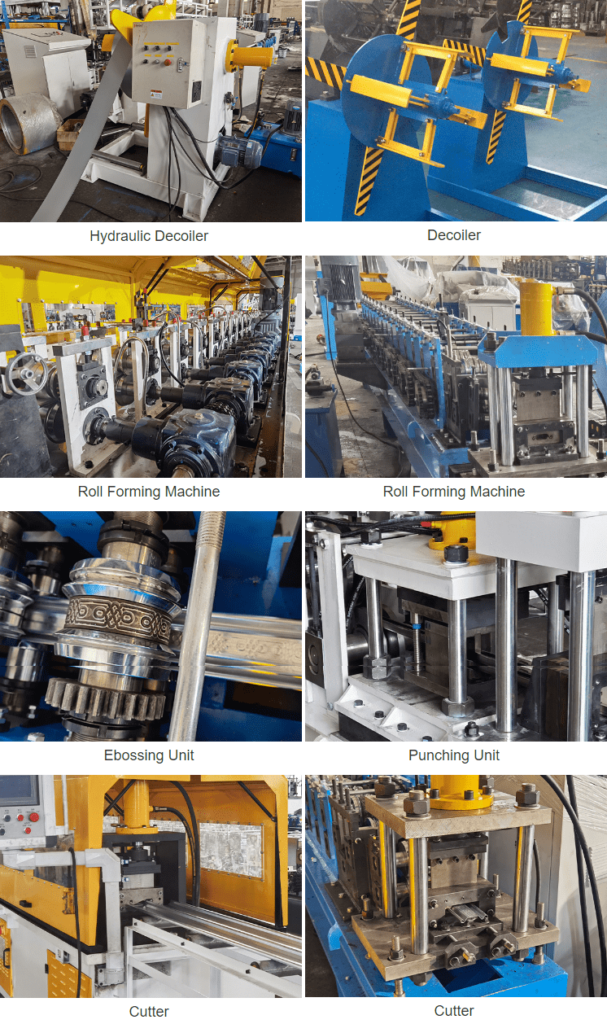
FAQ
| Question | Réponse |
|---|---|
| Quelles sont les dimensions standard des terrasses en acier ? | Les largeurs standard vont de 36 à 48 pouces, avec des épaisseurs allant de 16 à 22 gauge. |
| Comment les terrasses en acier sont-elles installées ? | Les terrasses en acier sont installées en les alignant sur les poutres de soutien et en les fixant à l'aide de vis ou de soudures. |
| Les terrasses en acier peuvent-elles être personnalisées ? | Oui, de nombreux fabricants proposent des dimensions sur mesure pour répondre aux exigences spécifiques d'un projet. |
| Quel est le meilleur type de platelage en acier pour les toitures ? | Le platelage de toiture, plus fin et plus léger, est idéal pour les applications de toiture. |
En conclusion, la compréhension de la dimensions des ponts en acier est essentiel à la réussite de tout projet de construction. Qu'il s'agisse de choisir le bon type de tablier ou de tenir compte de l'épaisseur, de la hauteur et de la largeur des nervures, les tabliers métalliques offrent polyvalence, solidité et durabilité dans une grande variété d'applications.
